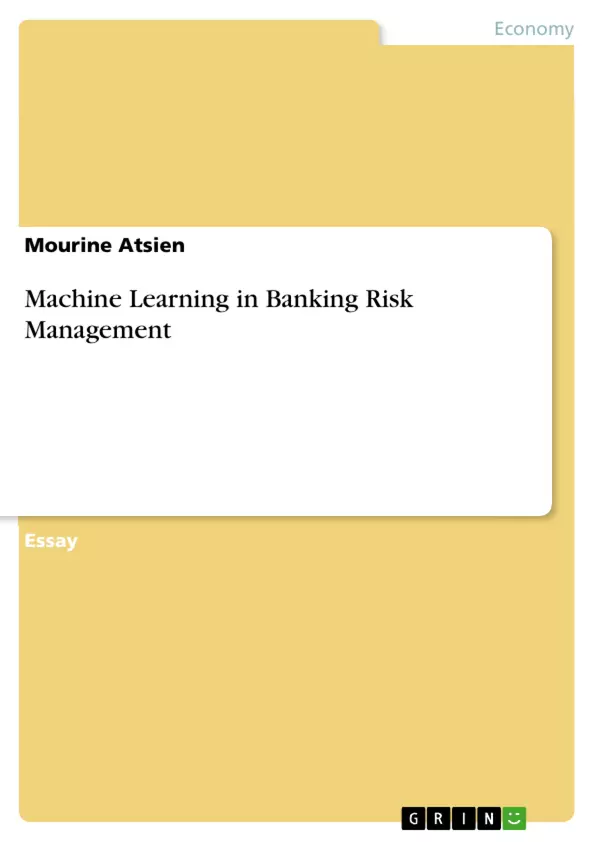Technological applications are playing a more influential role in management in the contemporary business environment. Machine learning, artificial intelligence, and other algorithmic applications are some of the most common influencers in business applications. They present numerous solutions to business management problems, including banking risk management. In the last decade, risk management has gained greater prominence in financial services. In the past, banks focused on the detection, measuring, and reporting of risks. However, they are now leveraging on machine learning for greater accuracy and efficacy in risk management. As such, this paper explored different ways that machine learning applies in banking risk management. To achieve the objective of this study, the researcher conducted a comprehensive literature review on the topic of machine learning in banking risk management. The researcher found considerable industry and academic research focusing on developments in the financial services industry, especially in relation to risk management. It reviewed the literature, analysing and evaluating various risk management machine-learning techniques. It identified risk management problem areas and explored various ways of addressing them.
The review showed that machine learning learning in risk management in financial services sector was still under-researched. While there were many studies on credit risks, other risks such as liquidity risks, market risks, and operational risks saw minimal attention. Nevertheless, machine learning applications were found to have the potential to develop more effective risk management models. Machine learning is leveraged on different data types to predict potential events with greater accuracy and estimate losses associated with different risk types. In addition, the machine learning techniques in risk management were found to provide better and more accurate results than traditional statistical models. Though machine learning suggests improving banking risk management, there are some areas that need further study. For instance, the paper suggested in-depth studies on machine learning models for different types of banking risks.
Table of Contents
- Abstract
- Introduction
- Discussion
- Conclusion
Objectives and Key Themes
This paper explores the various ways in which machine learning can be applied in banking risk management. Through a comprehensive literature review, the study examines different risk management machine-learning techniques and identifies areas where machine learning can contribute to more effective risk management models.
- The increasing importance of machine learning in contemporary banking services
- The application of machine learning techniques for risk detection, measurement, reporting, and management
- The potential of machine learning to improve the accuracy and predictive power of risk models
- The use of machine learning for various types of banking risks, including credit risk, market risk, operational risk, and liquidity risk
- The challenges and opportunities associated with implementing machine learning in banking risk management
Chapter Summaries
- Abstract: This section provides a brief overview of the paper's objectives, methodology, and key findings. It highlights the increasing role of machine learning in banking risk management and emphasizes the need for further research in this area.
- Introduction: This section sets the context for the paper by discussing the growing use of machine learning in financial services and its potential impact on risk management practices. It also provides a brief overview of the various types of banking risks and the importance of effective risk management.
- Discussion: This section delves deeper into the application of machine learning techniques in banking risk management. It explores the benefits of using machine learning for risk assessment, monitoring, and management, as well as the challenges associated with its implementation.
Keywords
The main keywords and focus topics of this paper include machine learning, banking risk management, credit risk, market risk, operational risk, liquidity risk, financial services, data analytics, risk models, and predictive modeling. The paper examines the application of machine learning techniques for risk detection, measurement, reporting, and management, highlighting the potential of machine learning to improve the accuracy and effectiveness of risk management models.
- Quote paper
- Mourine Atsien (Author), 2022, Machine Learning in Banking Risk Management, Munich, GRIN Verlag, https://www.hausarbeiten.de/document/1326036


